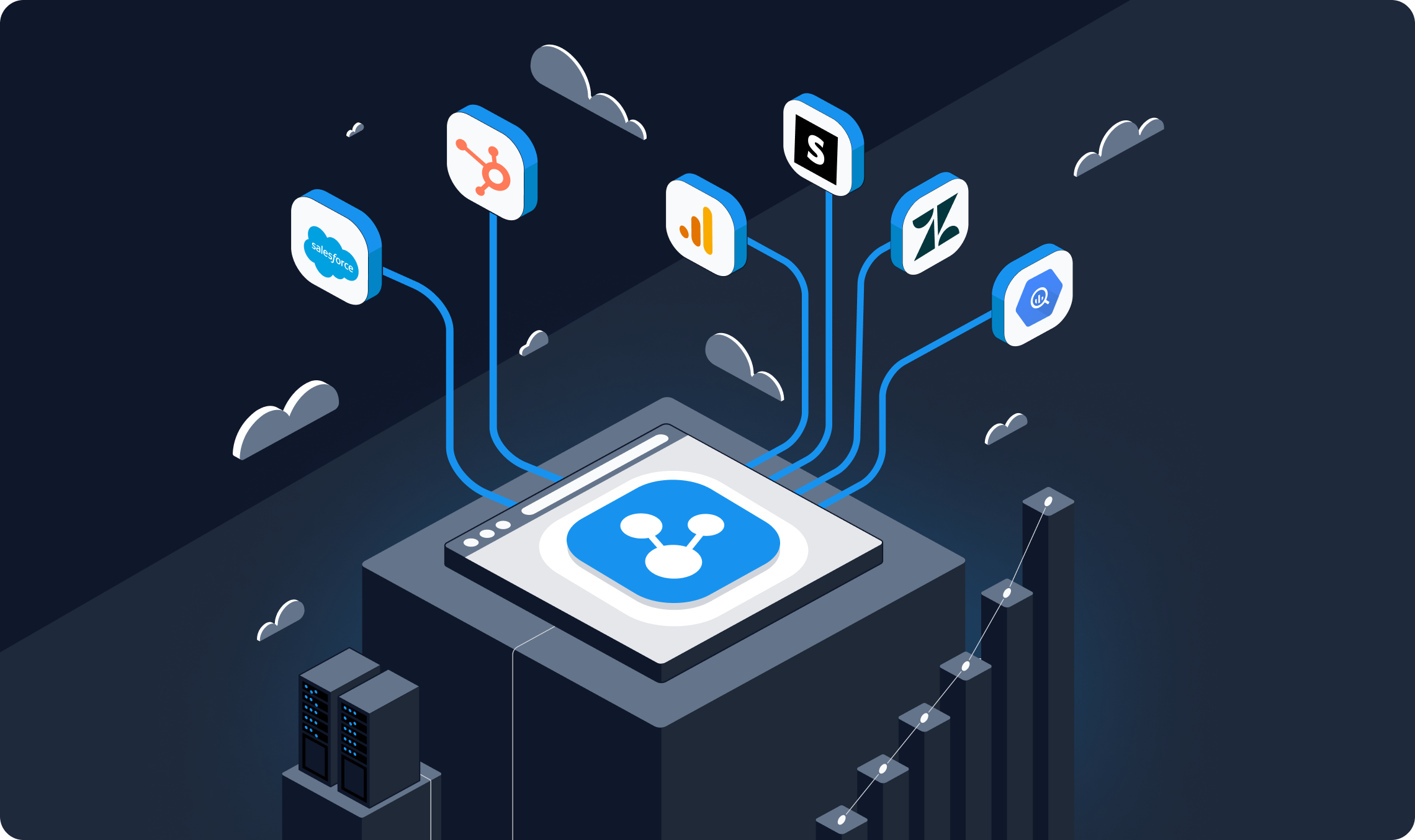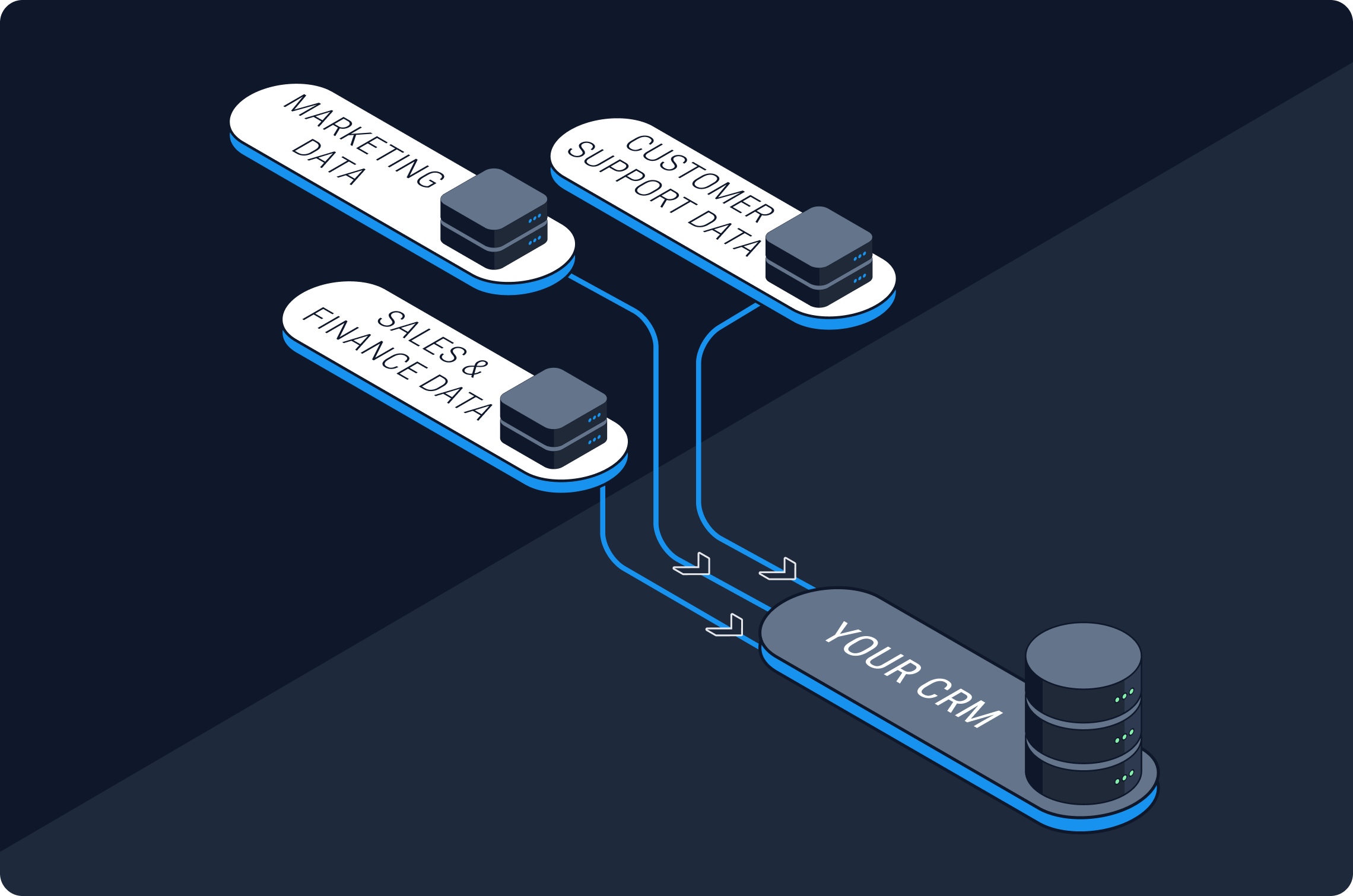If you’re a member of a sales team or anyone that works with CRMs, you know that CRMs aren’t equipped to give your teams all the data they need straight out of the box. This includes lead and customer scores, fresh data on in-app or on-web behavior, churn risk, and more. How can you get this data into the CRM where you spend most of your time?
In this article, we'll explore how reverse ETL tools can revolutionize your sales processes by making lead scores, churn scores, and other proprietary data directly accessible by business teams in your CRM.
Let’s look at how reverse ETL enhances your existing processes by adding new data points to in your CRM and optimizing the customer journey.
Enhance Sales Processes
Thorough Lead Scoring
Scoring is the secret sauce that can turn a good sales strategy into a great one. While CRMs offer scoring features, the real differentiation happens when you have a scoring model that considers a multitude of custom factors, including metrics and information from other tools such as Stripe, Zendesk, Google Analytics 4, and whatever other tools your teams are using to track customer behavior.
With reverse ETL, you can load this custom data to your CRM, so your team can pull it up anytime, even in the middle of a sales call. Imagine how much more effective this will enable you to be.

Track In-App & On-Web Behavior for Upsells & Retention
What if you knew that a customer has just clicked on a page of your website about specific features that are outside their current subscription; or maybe they’ve just hovered over that “Cancel Subscription” button for a few seconds too long?
With reverse ETL, it’s possible to route this information to your CRM in near-real-time.
This gives you the opportunity to strike while the iron is hot and upsell your existing customers. With this information in your CRM, you’d be able to set up automatic emails to be sent when a user visits your pricing page. Or use this information to prevent churn; if you know they’ve visited a page about cancellation, you can use this information to guide your personal communication with the customer.
Calculate Customer Lifetime Value (CLV)
Customer Lifetime Value (CLV) is a crucial metric that quantifies the total expected revenue a business can generate from a single customer throughout their entire relationship. Understanding CLV is essential for both sales teams and the broader business as it provides insights into the long-term value of acquiring and retaining customers.
It can be calculated using the following expression:
CLV =Average Purchase Value x Average Number of Purchases x Average Customer Lifespan
In order to calculate the most accurate CLV, you will need data from all the tools that hold data on your customers.
- Sales & finance data: Information on average purchase value, purchase frequency, and churn rate can be sourced from sales and finance records from apps such as Shopify, Stripe, Xero, and Quickbooks.
- Customer support data: Data from sources such as Zendesk, NetSuite, and Intercom will give you information on customer interactions and satisfaction, support interactions and feedback, and engagement.
- Marketing data: Customer acquisition costs, web behavior, and email marketing engagement from Google Analytics 4, MailChimp, and Google Ads will also contribute to a fuller understanding of your CLV.
Putting CLV data into your CRM can be done manually via CSV upload, but this is neither timely nor accurate. That’s where reverse ETL comes in. By seamlessly syncing data to the CRM, it empowers sales teams with real-time CLV insights during customer interactions, enabling them to make informed decisions that contribute to long-term customer value.

Implement Churn Scoring
Churn scoring is a metric used to predict and quantify the likelihood of a customer discontinuing their relationship with a business. It is a crucial component for businesses aiming to proactively address customer retention challenges and reduce customer attrition.
Churn score calculation may vary based on your business, model, and available data but regardless of your exact technique, you will need a combination of historical and real-time data. You may use metrics such as reduced usage, decreased engagement, late payments, or a decline in overall satisfaction. The data for these metrics would come from various apps such as Google Tag Manager, Intercom, and Quickbooks.
And how do you get data from all of these disparate sources into one place to build a churn model? That’s right—reverse ETL! By automating these pipelines from your sources into your CRM, you will always have an up-to-date churn score allowing for targeted retention strategies, personalized communication, and efforts to improve customer satisfaction.
Choosing the Right Reverse ETL Tool
In the last year or two, several fully managed reverse ETL tools have entered the market. But how do you choose the right one? Many tools are no- or low-code, offer free tiers, and allow for automated and managed pipelines that can be set up in just minutes. While most of these tools are relatively user-friendly, configuring reverse ETL pipelines is not the domain of complete data beginners.
For this reason, reverse ETL tools should be operated either by data teams or technically savvy professionals on business teams (i.e. citizen data scientists). Still, reverse ETL tools are a game-changer because they deliver crucial insights to business teams in a timely manner, they are a massive time-saver for data teams, and a massive money-saver for companies as a whole.
So, we encourage you to take a look at some of the best reverse ETL tools on the market to see which tool would be right for your use case. And talk to your data teams about data activation, enriching your CRM, the power you’ll have with accurate metrics such as lead and churn scoring, and how it’ll be easy achieving all of this with a good reverse ETL tool.
Why Reverse ETL with Dataddo
Dataddo offers a no-code, easy-to-use data integration platform for reverse ETL.
In addition to reverse ETL capabilities, the Dataddo platform supports various different types of integration such as classic ETL, integration between apps and dashboarding tools, and database replication. The reliability, security, flexibility, and scalability of Dataddo makes it the right choice for your current and future data integration needs.
Dataddo not only enriches your CRM with reverse ETL, it enables you and the others sales professionals on your team connect your business apps directly to dashboards for quick insights. This gives you and your team the ability and freedom to easily access data ad hoc without assistance from your data team.
In the competitive landscape of sales, reverse ETL is a game-changer your sales team needs to ensure your CRM is a powerhouse of real-time, valuable information that will help them provide a personalized approach to each customer and prospect.
|
One Tool for Reverse ETL & All Your Integration Needs Sign up for a free trial and see for yourself. |




Comments